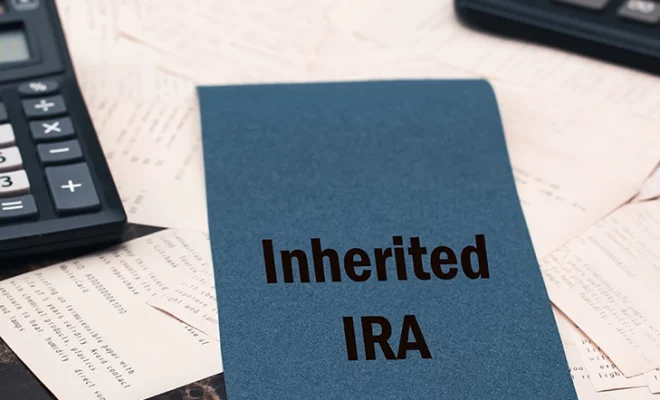How to Transfer Excess 529 Plan Funds to Roth IRAs

The 529 plan is a popular choice for saving for education expenses. Parents and grandparents can use this to support their children’s educational aspirations. These tax-advantaged accounts make it easier to save for future educational costs. However, the future is uncertain, and there is no guarantee that your child will attend the college you planned for or use the funds as intended. If your child’s plans change or you save more than necessary, you may find yourself with excess funds in the 529 plan. This could coincide with your retirement, making it a good idea to consider alternative uses for these funds. One option is to convert the leftover 529 plan money to a Roth Individual Retirement Account (IRA). This strategy allows you to use the excess funds for your retirement needs and adapt to changing circumstances.
A financial advisor can help you optimally use the 529 plan excess funds. This article will also discuss the steps for a 529 plan to an IRA rollover, its tax repercussions, and the alternatives you can consider if you do not wish to transfer your funds.
Table of Contents
529 transfer to Roth IRA – How can you roll over the excess funds?
As of January 1, 2024, you can use the excess funds for alternatives other than education. Here are the steps to transfer from a 529 plan to a Roth IRA:
- Open a Roth IRA account: The first step is to ensure that a Roth IRA account is created in the beneficiary’s name. If the beneficiary does not already have a Roth IRA, you will need to open one. This can be done through various financial institutions, such as banks, online brokers, etc.
- Initiate the transfer: Once the Roth IRA account is in place, the next step is to initiate the transfer of funds from the 529 plan. This involves formally requesting the transfer from the 529 plan provider. This request should typically be made through the Roth IRA provider, who will coordinate with the 529 plan provider to initiate the transfer. Be prepared with any documentation, such as your account slips and identity proof, to complete the rollover.
- Consult your plan provider: Consult the specific instructions provided by your 529 plan provider. This information can usually be accessed through their official website or by contacting them. Different 529 plans may have varying procedures and requirements for rolling over funds, so understanding these details is crucial.
- Seek professional advice: Before finalizing the transfer, it is recommended to seek professional advice from a tax advisor or financial planner. The rollover process can have tax implications. A financial advisor can help you understand the potential tax consequences of the rollover and provide guidance on how to manage the funds once they are transferred into the Roth IRA.
It is important to note that account holders were not allowed to transfer funds from a 529 plan to other accounts or use them for non-qualified expenses earlier. Before the implementation of SECURE 2.0, you faced taxes and penalties if you wanted to withdraw funds from a 529 plan for non-qualified education expenses. Using funds from a 529 plan for purposes other than qualified education expenses, such as tuition, books, room rent, supplies, computer equipment, and other similar costs was considered a non-qualified withdrawal. The earnings portion of these non-qualified withdrawals was subject to ordinary income tax. Additionally, a 10% federal tax penalty was imposed on the earnings portion of the non-qualified withdrawal. However, under the new SECURE 2.0 regulations, the rules have been revised to provide more flexibility for 529 plan account owners and beneficiaries.
Things to keep in mind when transferring excess funds from a 529 plan to a Roth IRA
While the new rule can help you access your funds for purposes other than education, there are some things to note before you transfer from a 529 plan to a Roth IRA, as explained below:
- Roth IRA contribution limits for 529 plan rollovers: When rolling over funds from a 529 plan to a Roth IRA, the rollover amount is subject to the Roth IRA annual contribution limits set by the Internal Revenue Service (IRS). For the year 2023, the annual contribution limit for a Roth IRA was $6,500 per individual. This limit was higher at $7,500 for those over 50. In 2024, these limits have been increased to $7,000 for individuals under 50 and $8,000 for those 50 and older. The limits may again be modified next year. It is essential to stay updated and adhere to these limits to avoid any tax implications.
- Earned income requirement: A crucial factor to consider is that the beneficiary of the Roth IRA must have earned income, such as a salary or wage, equal to or greater than the amount being transferred in any given year.
- 15-year rule for 529 accounts: To roll over funds from a 529 plan into a Roth IRA without incurring penalties or taxes, the 529 account must have been open for at least 15 years. An important point to note here is that if you change the designated beneficiary of the 529 plan, the account typically resets the 15-year clock. This implies that the new beneficiary would need to wait another 15 years before rolling over funds without penalties. Hence, you need to make sure to take account of any changes made to the beneficiaries before transferring your funds.
- Five-year rule for contributions: Funds rolled over from a 529 plan must also adhere to a five-year rule. Contributions or earnings on contributions made within the last five years from the rollover are ineligible for rollover. So, only funds that have been in the account for at least five years are eligible for transfer. Additionally, the transfer amount cannot surpass the 529 plan balance from five years ago.
- Lifetime rollover limit: There is a lifetime limit of $35,000 per beneficiary for rollovers from a 529 plan to a Roth IRA. Additionally, the transfers must comply with the annual Roth IRA contribution limits mentioned above.
For example, if you have $15,000 available for rollover from a 529 plan, you need to plan how to distribute the amount across the years, considering the annual contribution limits for each year. Here’s a practical approach that you can follow:
- For 2023: You can roll over up to $6,500. This leaves you with $8,500 remaining.
- For 2024: You can roll over up to $7,000. This reduces your remaining amount to $1,500.
- For 2025: You can roll over the remaining $1,500.
This way, you can spread out the $15,000 rollover over three years and adhere to the annual contribution limits. This will ensure that you stay compliant and avoid any potential tax issues or penalties. Remember that abiding by the transfer rules and annual contribution limits is crucial to avoiding unwanted cuts. Without this, you cannot make the most of your 529 plan funds and avoid any financial setbacks.
Tax considerations when transferring excess funds from a 529 plan to a Roth IRA
Here are some things to consider when if you wish to transfer from a 529 plan to a Roth IRA:
a. Federal tax implications
At the federal level, the IRS allows the rollover of 529 plan funds into a Roth IRA, provided specific conditions are met. These conditions include adhering to the annual Roth IRA contribution limits and ensuring that the beneficiary of the Roth IRA has earned income equal to or greater than the amount being rolled over. It is crucial to ensure that the rollover does not exceed these annual contribution limits to avoid additional taxes and penalties. Furthermore, the 529 account must have been open for at least 15 years to avoid penalties. Contributions and earnings made within the last five years do not qualify for a rollover, and the total transfer amount cannot exceed the balance from five years ago. There is also a lifetime rollover limit of $35,000 per beneficiary.
b. State tax considerations
While federal guidelines provide a general framework, state tax treatment of 529 plan rollovers can vary significantly. Not all states conform to federal rules regarding these rollovers. Some states may not recognize the transfer of funds from a 529 plan to a Roth IRA as a qualified expense, which could result in state income tax penalties. Given the variability in state tax rules, it is essential to understand how your state treats such rollovers. Some states may impose taxes or penalties on amounts transferred from a 529 plan to a Roth IRA, while others may align with federal tax treatment or offer more favorable conditions. Hence, consulting with a financial advisor or tax professional is highly recommended before proceeding with a rollover. They can help you understand the state tax laws and ensure that you comply with all relevant regulations to effectively manage your 529 plan funds.
Alternatives to transferring excess 529 plans to a Roth IRA
While the option of transferring leftover 529 plan money to a Roth IRA can offer many benefits, it may not be suitable for everyone. In such a case, you may consider exploring alternative strategies. Here are some options:
1. Keep the funds in the 529 account
One viable option is to keep the funds within the 529 plan and use them for future educational expenses. This could include costs related to your child’s graduate school or other higher education opportunities. Keeping the funds in the 529 plan allows you to continue enjoying the tax advantages associated with the account and avoid potential tax penalties that may arise from a direct rollover.
2. Change the beneficiary of the 529 plan
Another strategy is to change the beneficiary of the 529 plan. 529 plans offer the option to change the beneficiary from one child to another. You can also change the beneficiary to a stepchild, foster child, or adopted child in the family. This flexibility to switch the designated beneficiary not only preserves the tax benefits of the 529 plan but also ensures that the funds are used for their intended purpose.
3. Use the funds to pay off a student loan
Apart from using the funds to cover education expenses, you can also use up to $10,000 from a 529 plan to pay off qualifying student loans. This way, you can help your child manage student debt effectively and lower their financial burden. For students struggling with student debt, this can be a great way to ensure the child starts their career without the stress of repaying a massive loan.
4. Withdraw the funds tax-free if the child receives a scholarship
If the student receives a tax-free scholarship, you can withdraw an equivalent amount from the 529 plan. This can be done without incurring the 10% penalty that is typically associated with non-qualified withdrawals. However, while there will not be a penalty in this case, it is important to note that the earnings portion of these withdrawals will still be subject to taxes. Nevertheless, this option can help reduce the amount of taxable income and save money.
To conclude
With the new SECURE Act 2.0 ruling, unused funds in a 529 plan can now be transferred to a Roth IRA. However, this process comes with potential challenges, primarily related to tax implications. It is crucial to be aware of the various rules and regulations associated with such a transfer to ensure that you make an informed decision. It is also important to explore alternative options and consult with a financial advisor for expert guidance on how to navigate the transfer and address any potential tax issues.
Use WiserAdvisor’s free advisor match tool to get matched with seasoned financial advisors who can guide you on how to transfer excess 529 plan funds to Roth IRAs and the ensuing tax repercussions. Answer some simple questions about your financial needs and get matched with 2 to 3 advisors who can best fulfill your financial requirements.


















